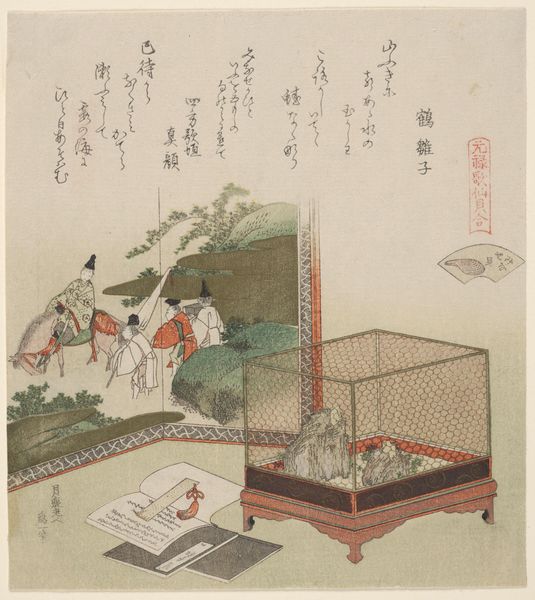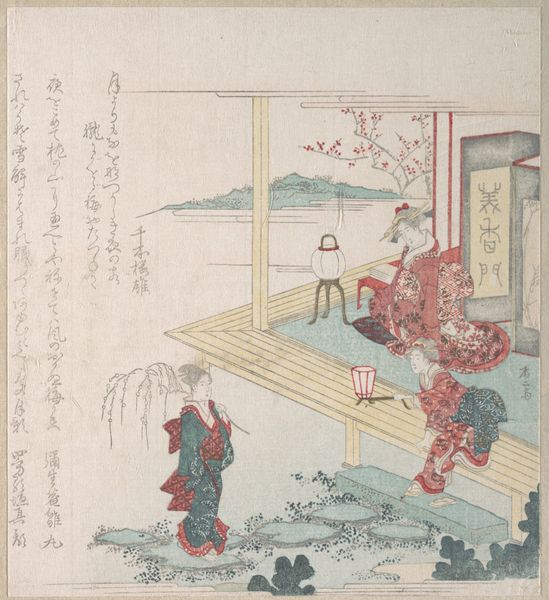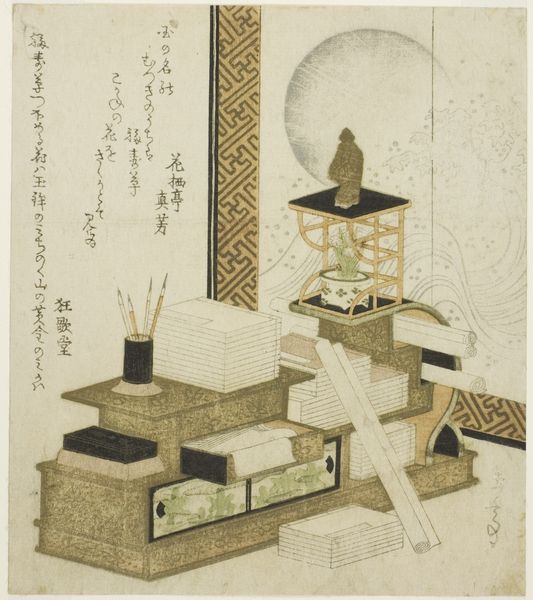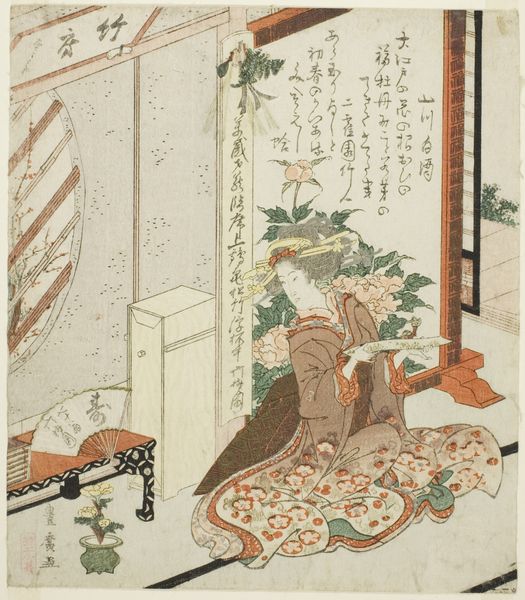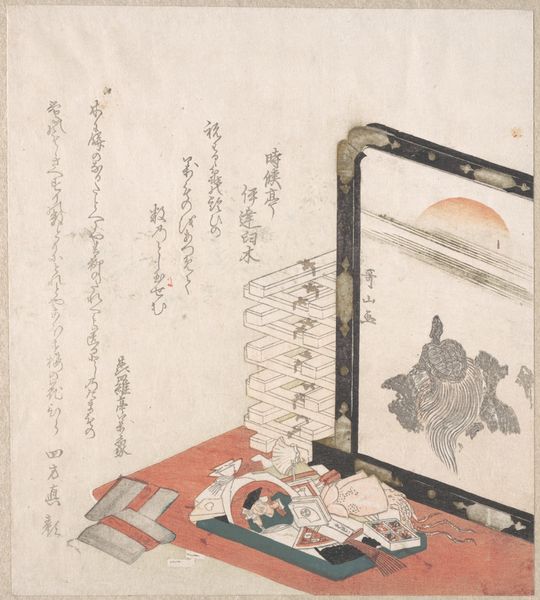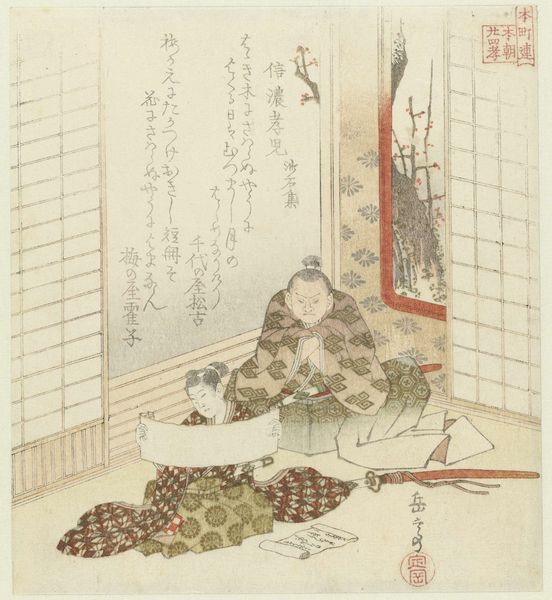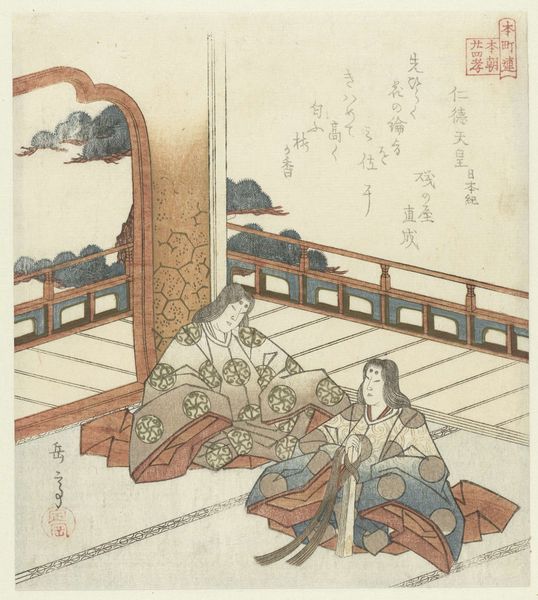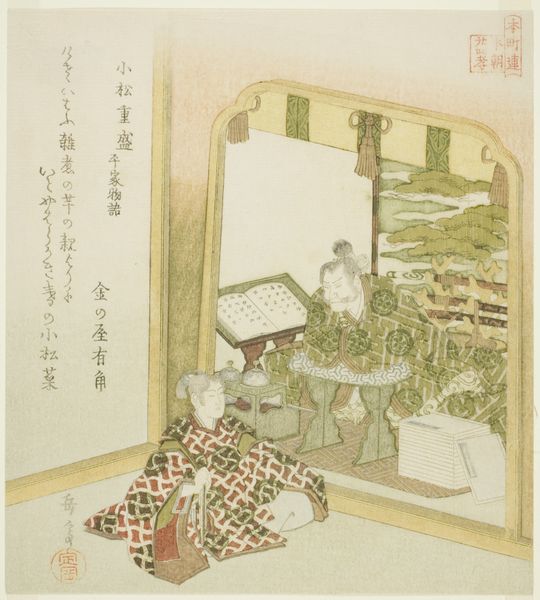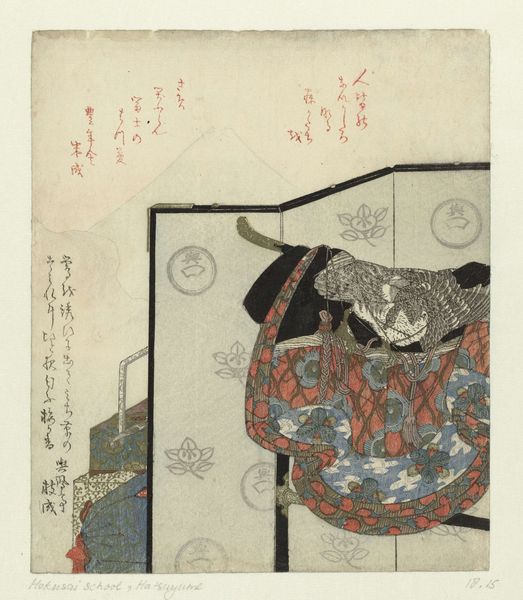
#
architectural sketch
#
aged paper
#
toned paper
#
homemade paper
#
sketch book
#
personal sketchbook
#
sketchbook drawing
#
watercolour illustration
#
storyboard and sketchbook work
#
sketchbook art
Dimensions: height 211 mm, width 181 mm
Copyright: Rijks Museum: Open Domain
Curator: Here we have Totoya Hokkei’s "Still Life with a Writing-table" from around 1832. I’m struck by how intimate it feels, like a glimpse into a very personal space. What are your first impressions? Editor: It feels calm, domestic. It’s a woodblock print, right? The colors are soft, and I like how all the objects are arranged; not crowded, but deliberately placed. How do you interpret this work, especially given the period in which Hokkei was creating it? Curator: Let’s consider the writing table itself. It suggests literacy, education, and privilege. Who had access to these tools and spaces in 19th-century Japan? Whose stories were being told and, crucially, whose were being silenced or overlooked? Editor: So, you’re suggesting we consider this image in light of social hierarchies? Curator: Exactly. Notice also the presence of natural elements, like the plum blossoms. These could be understood as symbolic of resilience and beauty found even within rigid societal structures, alluding to a natural, feminine strength in the confined space. But do you feel Hokkei offers a subtle critique of societal norms, or is it merely an aesthetic observation? Editor: It’s a good point that we may need to acknowledge there is not necessarily a political interpretation, and sometimes it is fine to see a peaceful space. The tension, for me, exists within knowing what life could be like and still appreciating beauty around oneself. Curator: And how does knowing its place in the Rijksmuseum today impact the piece’s impact, when placed among other artworks that may amplify those tensions even further? Editor: I hadn't thought about that, but you're right. Placing it in conversation with other pieces reframes the meaning again. Thanks for making me think more critically. Curator: And thank you for opening my eyes to seeing the quiet of domesticity within.
Comments
No comments
Be the first to comment and join the conversation on the ultimate creative platform.

